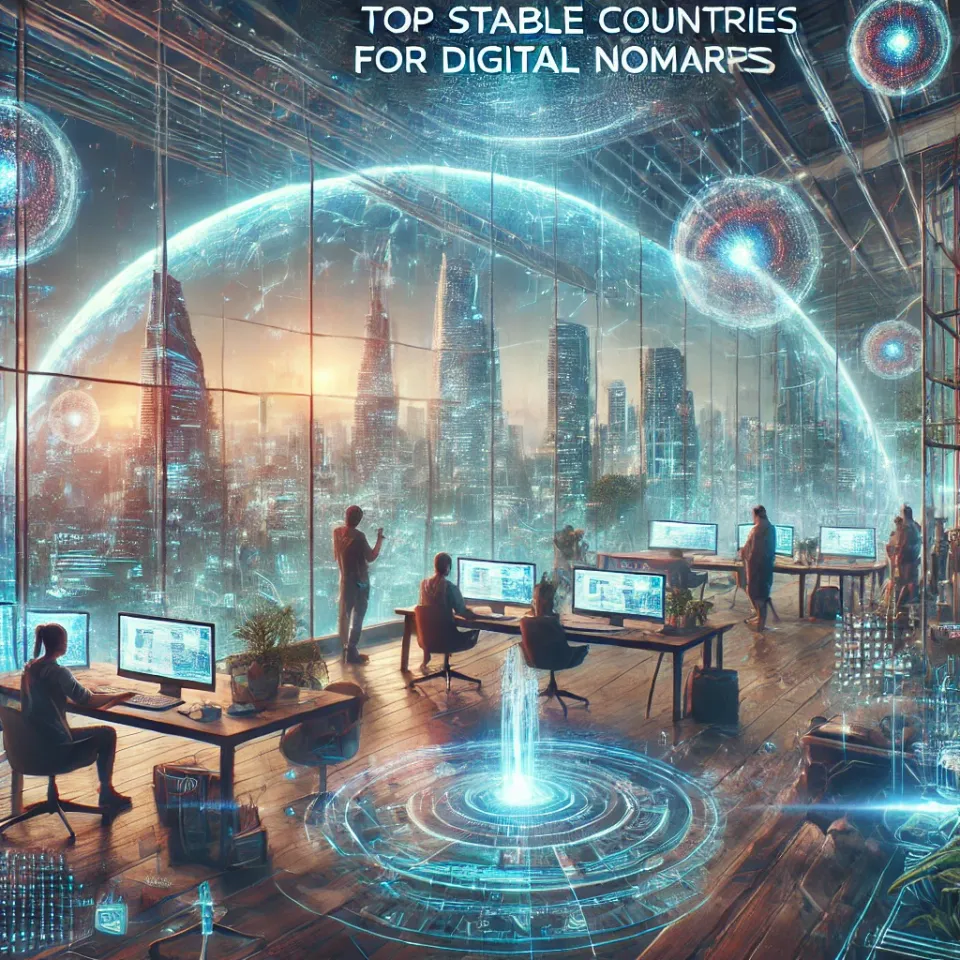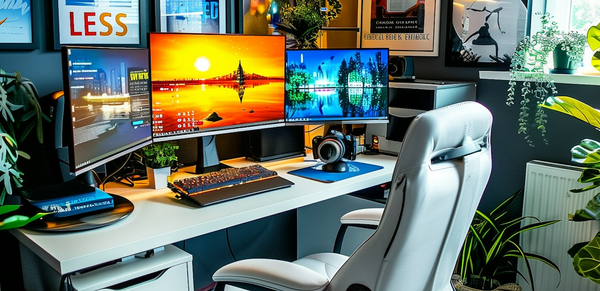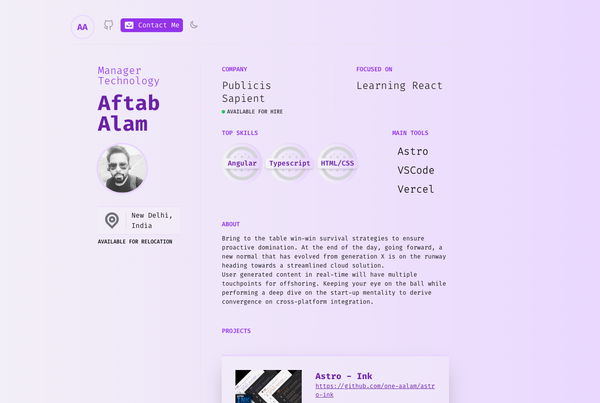Can Digital Nomad Freelance Developers Handle Long-Term Projects? and Best 6 Stable Countries for Digital Nomad Developers!
Table of Content
Digital nomadism has become a popular lifestyle choice for freelance developers, offering the freedom to work from anywhere in the world. But can digital nomad developers take on big projects that last for months?
This post explores the challenges, recommended lifestyles, sports, and countries offering digital nomad visas to help freelancers succeed in long-term projects.
What is a Digital Nomad?
A digital nomad is someone who leverages technology to work remotely while traveling. Freelance developers, writers, designers, and entrepreneurs often embrace this lifestyle, enjoying the flexibility to work from any location with an internet connection.

Challenges of Taking on Long-Term Projects as a Digital Nomad
1. Time Zone Differences
- Challenge: Working with clients or teams in different time zones can lead to communication delays and scheduling conflicts.
- Solution: Use tools like World Time Buddy to manage time zones and plan meetings during overlapping hours.
2. Internet Connectivity
- Challenge: Reliable internet is crucial for long-term projects. Inconsistent connectivity can disrupt work and communication.
- Solution: Research destinations with strong internet infrastructure and consider coworking spaces with high-speed internet.
3. Maintaining Consistency
- Challenge: Moving frequently can disrupt routines and focus, making it harder to stay productive on long-term projects.
- Solution: Adopt a slower travel pace, staying in one place for several months to establish a routine.
4. Legal and Tax Considerations
- Challenge: Working across multiple countries can complicate legal and tax obligations.
- Solution: Consult with a tax advisor familiar with digital nomad taxation and consider countries offering favorable tax conditions for remote workers.
Recommended Lifestyles and Activities for Digital Nomads
1. Routine Building
Establish a daily routine that includes dedicated work hours, breaks, and leisure activities. A consistent schedule helps maintain productivity.
2. Physical Activity
Regular exercise is crucial for maintaining health and well-being. Engage in local sports like surfing in Bali, hiking in the Swiss Alps, or yoga in Thailand.
3. Social Connections
Join local digital nomad communities or coworking spaces to meet like-minded individuals. Social connections provide support and networking opportunities.
4. Mindfulness Practices
Incorporate mindfulness activities such as meditation or journaling into your routine. These practices help manage stress and stay focused on long-term goals.
6 Tips for Building a Productive Daily Routine
1- Set Clear Work Hours
Define specific hours for work each day, ideally matching the time zones of your clients or team. Stick to these hours to create a rhythm that balances productivity with personal time.
2- Incorporate Regular Breaks
Schedule short breaks every 60-90 minutes to rest your mind and body. Use techniques like the Pomodoro method (25 minutes of work followed by a 5-minute break) to maintain focus and prevent burnout.
3- Prioritize Morning Routines
Start your day with a consistent morning routine that energizes you. This might include exercise, meditation, or reading, which can set a positive tone for the rest of the day.
4- Plan Leisure and Social Activities
Dedicate time in your schedule for leisure activities and social interactions. Engaging in hobbies, exploring your surroundings, or meeting with other digital nomads can enhance your well-being and prevent isolation.
5- Use Productivity Tools
Utilize tools like task managers (e.g., Todoist, Trello) to organize your day and prioritize tasks. Set daily goals and review your progress at the end of each day to stay on track.
6- Be Flexible and Adjust
While consistency is key, allow room for adjustments based on your workload, travel schedule, or unexpected events. Flexibility ensures you can maintain your routine without feeling constrained.
Digital Nomad Visa Options and Pros & Cons for Freelancers
Here’s a breakdown of countries offering digital nomad visas, along with their pros and cons:
1. Estonia
- Visa: Digital Nomad Visa
- Benefits: Stay up to a year, e-Residency program for business management.
- Pros:
- Advanced digital infrastructure.
- Strong support for remote business management via e-Residency.
- High quality of life in a tech-forward country.
- Cons:
- Cold winters might not appeal to everyone.
- Higher cost of living compared to other Eastern European countries.
2. Portugal
- Visa: D7 Visa
- Benefits: Ideal for freelancers, offers substantial tax breaks through the Non-Habitual Resident (NHR) program.
- Pros:
- Mediterranean climate with mild winters and warm summers.
- Rich cultural and social scene, especially in cities like Lisbon and Porto.
- Favorable tax regime for new residents.
- Cons:
- Bureaucratic processes can be slow.
- Language barrier might be an issue in rural areas.
3. Barbados
- Visa: Barbados Welcome Stamp
- Benefits: One-year visa, beautiful island lifestyle, strong internet infrastructure.
- Pros:
- Stunning beaches and a relaxed island lifestyle.
- Strong expat community and excellent internet for remote work.
- Direct flights to major cities in North America and Europe.
- Cons:
- High cost of living, especially for imported goods.
- Potential for hurricanes during the season.
4. Costa Rica
- Visa: Rentista Visa
- Benefits: Two-year visa, low cost of living, tropical environment.
- Pros:
- Affordable cost of living and healthcare.
- Biodiverse environment with access to beaches, rainforests, and mountains.
- Friendly local population and vibrant expat community.
- Cons:
- Occasional political instability.
- Need to demonstrate a steady income or make a significant deposit in a Costa Rican bank.
5. Bermuda
- Visa: Work from Bermuda Certificate
- Benefits: One-year visa, no income tax, high standard of living.
- Pros:
- Zero income tax for residents.
- Safe, clean, and beautiful environment.
- Close proximity to the U.S., making it ideal for North American freelancers.
- Cons:
- Very high cost of living, especially for housing.
- Limited social and entertainment options outside of outdoor activities.
6. Malaysia
- Visa: Malaysia My Second Home (MM2H) Visa
- Benefits: Long-term visa, affordable cost of living, modern amenities.
- Pros:
- Very low cost of living with high-quality infrastructure.
- Multicultural environment with a wide range of food and cultural experiences.
- Well-developed healthcare system.
- Cons:
- Humid and hot climate year-round.
- Traffic congestion in major cities like Kuala Lumpur.

Choosing the right country for your digital nomad journey depends on balancing the pros and cons of each destination.
Whether you prioritize cost of living, climate, tax benefits, or lifestyle amenities, each of these countries offers unique opportunities for freelancers and remote workers looking to live and work abroad.
Final Thought
Digital nomad freelance developers can take on big projects that last for months with the right strategies in place.
By managing challenges like time zones and internet connectivity, adopting a supportive lifestyle, and choosing the right destination with a digital nomad visa, you can successfully manage long-term projects while enjoying the freedom to work from anywhere.












